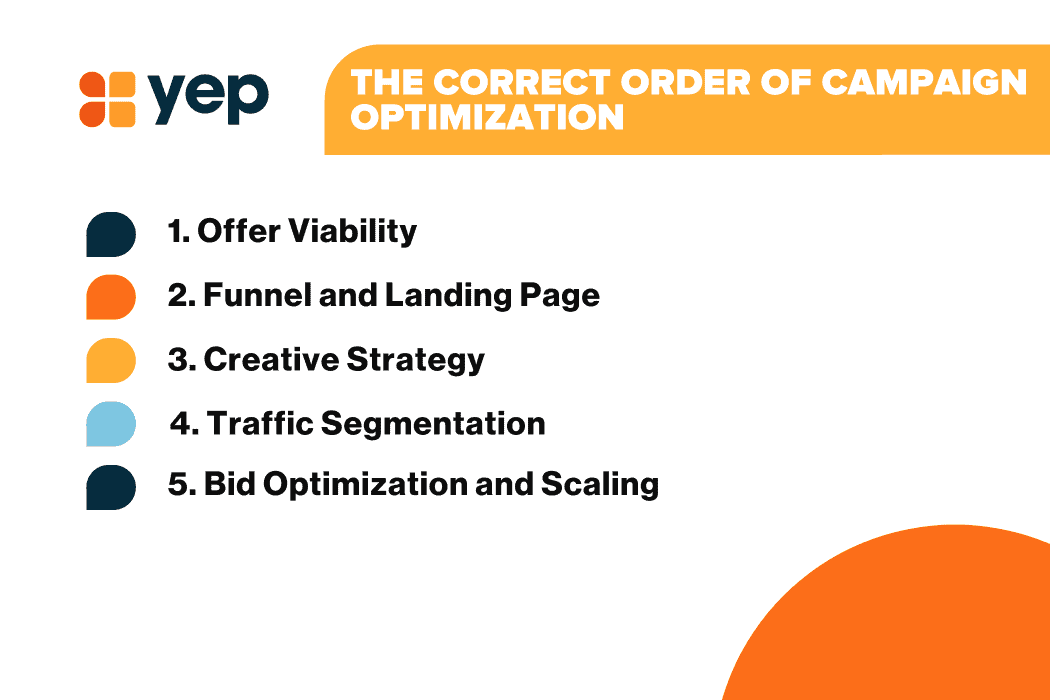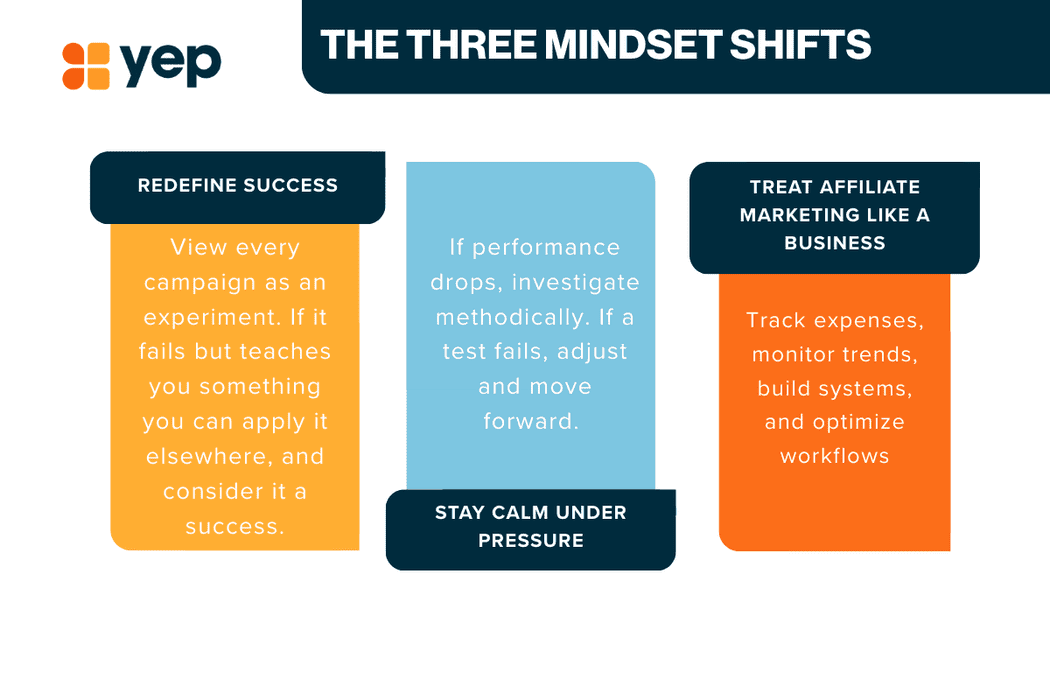
How To Build Better Campaigns in 2025
How To Build Better Campaigns: Why Strategy Wins in 2025
Affiliate marketing often enters conversations as a fast-paced world full of high earning potential, global reach, and seemingly limitless opportunity. For many, it represents the promise of financial freedom and remote work, with barriers to entry that appear low on the surface. This appeal draws in waves of ambitious newcomers, eager to scale campaigns and generate revenue with speed and agility.
But once inside, many quickly discover that lasting success is less about adrenaline and more about architecture. It is not about finding one winning trick but about building a system that uncovers what works and why. While fast launches and bold testing have their place, the most profitable affiliates in the world follow a different playbook. They build slowly. They test methodically. And most importantly, they learn constantly.
This article takes you behind the scenes of how top-performing affiliates think, plan, and operate. Whether you are just beginning or looking to level up, these lessons will give you a framework for building more resilient, data-driven campaigns that compound over time.
Table of Contents
- Why Many Campaigns Fail in the First Week
- The Problem with Random Testing
- How Strategic Affiliates Operate
- Case Study – Turning a Failing Campaign into a Winner
- Real Testing Produces Real Learning
- The Correct Order of Optimization
- Testing on a Tight Budget
- Three Mindset Shifts of Professional Affiliates
- Final Thoughts – Structure Over Shortcuts
Key Takeaways
- Long-Term Success Requires Structure – Winning affiliates build systems for testing, optimizing, and learning, rather than chasing short-term wins.
- Most “Failed” Campaigns Are Incomplete Experiments – Many are abandoned before meaningful optimization can begin.
- Strategic Testing Beats Random Changes – Isolate variables, document results, and make data-driven decisions to create scalable processes.
- Follow the Correct Optimization Order – Test offer viability first, then improve funnel, creatives, traffic segmentation, and finally bid scaling.
- Mindset Separates Professionals from Dabblers – Top affiliates see failures as learning opportunities, stay calm under pressure, and treat affiliate marketing like a business.
Why So Many Affiliate Campaigns Fail in the First Week
If you have ever launched a campaign, watched it underperform, and immediately moved on to something new, you are not alone. This pattern is incredibly common and often mistaken for strategic agility. In reality, it reflects a misunderstanding of what campaign testing should actually look like.
Here is the typical scenario. An affiliate selects a trending offer, sets up a funnel quickly, purchases some traffic, and watches the results trickle in. Maybe a few clicks. Perhaps a conversion or two. But the cost per acquisition is too high, and the return on ad spend is well below breakeven. Within a day or two, the campaign is paused. The conclusion: this offer does not work.
This cycle repeats itself over and over again. It creates the illusion of experimentation while producing no lasting knowledge or success. The real problem is not the offer, the traffic source, or the vertical. The problem is a lack of structure and a lack of patience.
Most campaigns are not failures. They are incomplete experiments. They never had a chance to succeed because they were abandoned before meaningful optimization began. Campaigns often require several rounds of iteration before becoming profitable. Quitting too soon means missing the opportunity to unlock that value.
What Random Testing Really Looks Like
Many affiliates claim they are testing, but in practice, they are reacting. Instead of executing a clear plan, they make reactive decisions based on emotions, assumptions, or momentary trends. This leads to testing that is scattered, unfocused, and unscalable.
You can recognize unstructured testing when you see:
- Rapid shifts from one vertical to another without developing a deep understanding of any
- Adjustments to multiple variables at once, such as creative, targeting, and landing page, simultaneously
- Decisions based on a small number of clicks or a single day of performance
- Little to no documentation about what was tested or what the results were
- Overreliance on intuition rather than data trends
This type of testing does not create growth. It creates noise. Without clarity about what is being changed and why, there is no way to build knowledge or improve outcomes over time. You may get lucky occasionally, but without a repeatable process, those wins will be inconsistent and unsustainable.
Strategic Affiliates Think in Systems
The affiliates who succeed at scale operate with discipline. They treat each campaign as a system to be improved, not a lottery ticket to be cashed. They build infrastructure, gather clean data, and refine their approach over time.
These affiliates develop a reliable process that allows them to launch, test, and optimize campaigns with confidence. They are less emotionally attached to short-term results because they are focused on the long game. They understand that each failed test is an investment in future performance.
Common traits among strategic affiliates include:
- Narrow focus on one vertical at a time to build meaningful domain expertise
- Documented testing plans that isolate variables clearly
- Use of control groups and baseline data for comparison
- Regular analysis of user flow, heatmaps, funnel drop-off points, and behavioural data
- Willingness to keep campaigns live even during underperformance while learning and optimizing
Over time, this approach compounds. Affiliates with this mindset not only make better decisions, but they also build campaign templates, creative frameworks, and landing page structures that can be reused and improved again and again. This turns individual wins into long-term growth.
Case Study: From Zero Conversions to a Winning Campaign
Consider this real-world example. An affiliate launched a campaign in a new vertical, using a promising offer from their network. They followed the advice of their account manager, set up a landing page, and began running paid traffic.
The first twenty-four hours produced no conversions. The second day showed a single conversion with a cost per acquisition four times higher than the payout. Many affiliates would have stopped there.
Instead, this affiliate took a measured approach. They began by analyzing the landing page. Click tracking revealed users were dropping off before scrolling halfway down. They adjusted the hero section to focus more clearly on the core value proposition. The drop-off rate decreased.
Next, they reviewed their ad creative. Engagement was low. They swapped out the imagery and tested three new copy variations using performance hooks tailored to the audience. Click-through rates improved by thirty percent.
They then narrowed their traffic segments. Tablet traffic was converting poorly compared to mobile. Late-night traffic was unprofitable. They excluded these segments and reallocated spend to the top converting hours and devices.
Within ten days, the campaign was generating a return on ad spend of over two hundred percent. And it continued to improve as more data came in.
This success was not due to a sudden change in luck. It was the result of structured analysis, iterative optimization, and a refusal to abandon the campaign without learning from it.
Real Testing Produces Real Learning
Every dollar spent on traffic is a tuition payment in the university of affiliate marketing. You either earn a return financially or a return in knowledge. The only way to truly fail is to walk away with neither.
When you structure your testing properly, you gain insights with every campaign. You understand what messaging works for a specific audience. You discover which landing page layouts drive better engagement. You learn how the time of day or device type can influence conversion rates.
These learnings do not just help one campaign. They become the building blocks for future success. They reduce guesswork and shorten the time it takes to reach profitability in your next campaign.

Image Source: Yep Ads Website
The Correct Order of Campaign Optimization
Many new affiliates begin optimization in the wrong place. They change the colour of a button before understanding whether the core offer appeals to their target audience. They redesign landing pages before confirming whether the audience even wants the product.
Here is the strategic order in which successful affiliates optimize:
- Offer Viability
Begin by testing whether the offer has baseline appeal. Send simple, direct traffic to the offer without complex funnels. Compare multiple offers in the same category. Look for signs of product market fit in the form of click-to-conversion ratios and early engagement. - Funnel and Landing Page
Once you confirm the offer has potential, focus on how it is presented. Your landing page should communicate value clearly and remove friction. Test headline variations, page structure, social proof elements, and loading speed. Use heatmaps and scroll tracking to diagnose weak spots. - Creative Strategy
Now that the funnel converts, focus on how you attract users. Your ad creative should align with the landing page and target intent. Test different hooks, emotional angles, calls to action, and formats. High-performing creatives can double or triple campaign profitability. - Traffic Segmentation
Break down your results by geo, device, time of day, operating system, and traffic source. Identify which segments convert best and which ones underperform. Use these insights to refine targeting and maximize efficiency. - Bid Optimization and Scaling
With a converting campaign, you can now adjust bidding to improve margins. Increase bids on profitable segments and reduce or exclude unprofitable ones. Gradually scale budgets while monitoring performance. Maintain data integrity to avoid disrupting the learning process.
Testing on a Tight Budget
One of the most common misconceptions is that effective testing requires large ad budgets. In truth, thoughtful testing is even more important when your budget is limited. You cannot afford to waste spend, so each test must be designed to produce usable insights.
Start with cost-effective offers such as single opt-ins or app installs. These allow you to observe user behaviour and conversion signals without high spend.
Limit your variables. Focus on one offer, one landing page, and two to three creatives. Document every change. Let the data guide your next step.
The key is not how much you spend, but how well you use what you learn. Even with modest budgets, you can build an extremely valuable understanding of what works and what does not.

Image Source: Yep Ads
The Three Mindset Shifts That Separate Professionals from Dabblers
If there is one thing that separates top performers from everyone else, it is mindset. Winning affiliates operate from a completely different set of beliefs and expectations.
- They Redefine Success
They do not measure success only in short-term profit. They view every campaign as an experiment. If it fails but teaches them something they can apply elsewhere, they consider it a success. - They Stay Calm Under Pressure
They are not emotionally reactive. If performance drops, they investigate methodically. If a test fails, they adjust and move forward. This emotional discipline allows them to stay in the game longer than their competitors. - They Treat Affiliate Marketing Like a Business
They track expenses, monitor trends, build systems, and optimize workflows. They are not chasing dopamine hits. They are building a long-term, sustainable business using repeatable systems.
Final Thoughts: Long-Term Wins Come from Structure, Not Hype
Affiliate marketing rewards those who are willing to build thoughtfully. If you are looking for a shortcut, you may win a few campaigns. But if you are looking to build a real, revenue-generating business that grows year after year, the answer is structure.
You do not need to be perfect. You do not need to have insider access. But you do need to develop a system for testing, learning, and improving over time. Campaigns become profitable not by chance, but by deliberate adjustment.
Focus on one offer. Build one funnel. Test one idea. Learn from the results. Then do it again. That is how real affiliate businesses are built. One test at a time.
Frequently Asked Questions (FAQs)
- Why do so many affiliate campaigns fail quickly?
Many are stopped too early. Campaigns often need multiple optimization rounds to become profitable, but affiliates abandon them before meaningful data is gathered. - What’s the difference between random testing and structured testing?
Random testing changes multiple factors without clear documentation, creating noise instead of insights. Structured testing isolates variables, tracks results, and builds repeatable systems. - What’s the best order for campaign optimization?
Start by confirming offer viability, then refine the funnel and landing page, improve creatives, segment traffic, and finally optimize bids for scaling. - Can affiliates succeed with a small budget?
Yes — smaller budgets require careful planning. Focus on low-cost offers, limit variables, and ensure every test produces actionable insights. - What mindset do top affiliates have?
They see failures as learning opportunities, avoid emotional reactions, and treat affiliate marketing as a long-term business built on repeatable processes.
